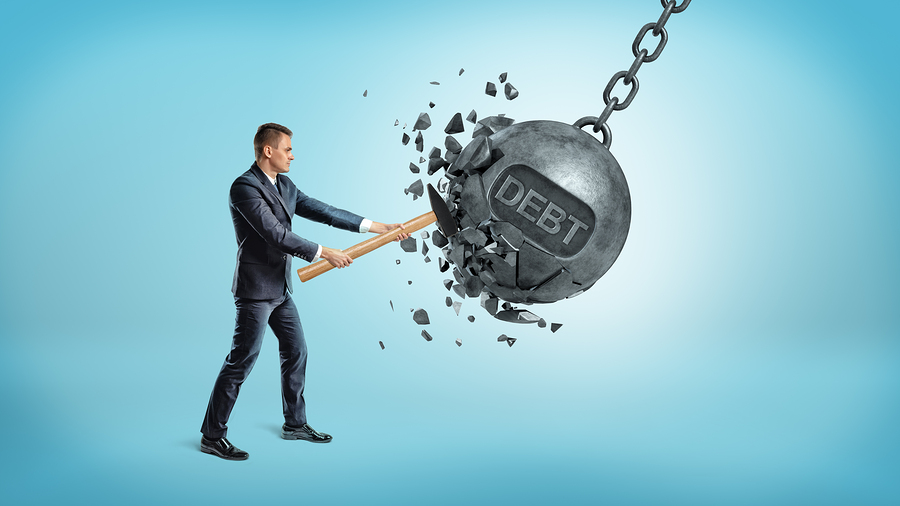
It is no longer news that debt is on the rise and a lot of people are indebted to an extent that they need serious help to get out of these debts. Cost of living is on the rise and income is not rising at the same pace with it. Additionally, many life events can throw people off financially and cause them to take out loans that end up keeping them in a cycle of debts.
There are many people who have multiple debts and credit card obligations that are unmet with no financial relief in sight. One of the reasons why this is so is the ease of access to financial instruments such as consumer loans and credit cards. Does this now mean that people should not use financial instruments? Our answer is a categorical NO!
The major issue that leads people into this financial quagmire is first and foremost a lack of due diligence before engaging these tools. Some people just take out loans without considering how they will pay; others do not consider the interest rates and other terms and conditions. You can visit https://money.howstuffworks.com/ for more insight on causes of indebtedness.
Well, we have just stated what may have led to indebtedness, but the focus of this article is to help people who are already in this mess to get out of it. Stay with us as we share tips that will help you work your way out of every single debt that you have.
Before we begin to talk about getting out of debt, it is important that we understand what it is. Strange as it may sound, some people do not even understand the concept of indebtedness or the toll that it takes on the overall wellbeing of an individual. In this segment, we will briefly highlight some key points about debts.
There are different kinds of debts and they include credit card, consumer loans and business loans.
1. Credit Card – This is a liability that is unsecured which the borrower incurred from the use of credit cards as a revolving line of credit. These debts are accumulated by getting multiple credit cards with different terms and conditions and credit limits. All of these accounts are usually reported and kept tabs on by credit bureaus. This forms the bulk of outstanding debts that are usually on a person’s credit report.
2. Mortgage – This is a voluntary credit that a homeowner takes on either for the initial purchase of the home or at a later date with the property as collateral.
3. Student Loans – This is a liability that is incurred from borrowing money to fund tertiary education. Many students in the US understand this debt because many of them have to deal with this, even years after they have graduated.
4. Consumer – This is a blanket term for almost any kind of loan that an individual collects. We use this term to cover the remaining types of debt; from medical, to personal or auto and pay day loans. These facilities can rack up the numbers faster than you can imagine.
All these debts can be divided into secured and unsecured; the secured ones are from loans that are backed by collateral while the unsecured ones are those from loans not backed by collateral. There is also something known as good or bad debts.
Good debts are those credits that one takes out for either business purposes or investments or those that are meant for long term project. As counterintuitive as this may sound, a debt can be good based on the purpose for which it is incurred. For example, taking out a loan to buy a house is a noble venture and while one may be indebted for like 15 to 30 years; it is for a good cause.
Bad debts on the other hand are loans taken out to fund wants and not needs. An example of a bad debt is one incurred through the excessive use of credit cards or personal loans.

Now that you have seen the different types of liability that one may be responsible for, you can clearly understand that some are inevitable or necessary while some can be avoided. Liabilities such as students’ loans and mortgages are necessary agreements that are into for long terms and they are not debts that one will seek to eliminate in a hurry.
People who take out these long term loans often have plans designed for the payment. However, problems arise when people with such long term liabilities go ahead to add more debts such as credit card liabilities and consumer loans. This is not to say that people with these types of credit facilities cannot use credit cards or take out consumer loans. The problem lies in the way these financial tools are used.
Most people overshoot the limit on their credit cards while others do not make their payments as at when due. All these add up to increase the borrower’s debt profile.
In this segment therefore, we will share tips on how to get out debts:-
Before you think of paying off your debts, you need to have a clear overview of the total sum. Know how much they cost you on a monthly basis. Take inventory of all the loans you took out including your credit card obligations. Do not forget to add any payment you have to make for instalment purchases.
This is a good option for consumers who have multiple small loans. It is best to take out a lump sum and pay off all the small loans. This will save you the individual administrative fees you pay on each credit facility and also reduce your overall interest rate.
Additionally, you will be able to track your monthly payments more effectively if you have only one loan than when you have to juggle multiple payments.
Whether you decide to take out a refi loan or pay off starting from the most expensive loan, it is imperative that you draw up a budget once you have an overview of all your debts. With this budget, you can assign what percentage of your monthly income goes to servicing of debts and what goes into your living expenses.
To create an effective budget, you need to look through your bank statement for at least the last 6 months. This will help you track what you have been spending money on and you might be surprised to see that you have been spending too much money on frivolities. This brings us to the next step…
After examining your bank statement, the next thing you should do is curtail your spending on frivolities and wants. Set a spending goal and celebrate yourself any time you reach that goal; this will help reinforce the behaviour. Consciously cutting back on your spending will help you save money that you can channel to loan payments.
There are many habits that may even be healthy that you are spending money on, you can look for cheaper or free alternatives. One such habit is gym attendance; you can seek out DIY exercises that will still have the same positive effect on your body and health.
Whether you are a salary earner or an entrepreneur, you can always engage multiple streams of income. As a salary earner, you can look out for extra shifts or overtime; you can also apply for a raise. Additionally, you can look out for remote jobs or weekend gigs that can help increase your income.
There are many avenues through which you can increase your income. you can turn a hobby to a money making venture. You can also rent out that extra room in your home or use your car for cab hailing business. Just look inwards and think of what to do.
We assume that you have an overview of all the loans you have to repay. Therefore, pick the one with the highest interest rate and pay it off first. This is what it means to prioritize your debts. If you have credit card debts or small consumer loans, bear in mind that these ones rack up interest fast so they are the ones to tackle first.
There are many other things that you can do to get rid of debts. You can click here for more details. However let us summarize by saying that if you are serious about getting out of debt, you have to be deliberate. You cannot just keep conducting your financial affairs anyhow.
Make a conscious effort at obtaining more financial information. This is part of the reasons why we have taken out time to share the tips that we have shared in this article.
Some people have even gone as far as closing down credit card accounts until they have gained financial discipline for proper use of these tools. We are not asking you to do the same but it just goes to show that you must take some stringent measures if you must get out of the debt cycle.















